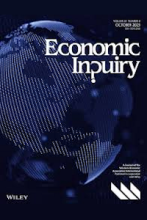The industrial revolution is usually considered a market-driven process. We hypothesize that state policies designed to mitigate market failure played a much more significant role in the Industrial Revolution than the historiography currently suggests. We plan to investigate: the scale of the effects of state policies; the specifics of the regulatory mechanisms; and how the institutional mechanisms evolved over a 200-year period, both because market and technological conditions changed and (we suspect) because regulations were generally tightened up over time.
Our focus is on transport infrastructure in the 18th and 19th centuries, which were the formative years for state intervention. Parliament implemented a general policy whereby it authorized trusts and joint stock companies to improve infrastructure through tolls and related powers. This approach, similar to public-private partnerships today, led to the building of extensive road, canal, port, and railway networks. Parliament did more than just authorize projects however. It also regulated through toll caps and including provisions on compulsory purchases of land and capital structure.
Policies toward shipping evolved differently. In the late 17th century there was a legacy of 'bad' interventions by the royal government. These included extractive duties on coal shipped coastwise, the absence of docks on the Thames, largely to protect the monopoly privileges of the Lightermen, and the purchase of offices by coal meters, of whom there were never enough on the Thames, leading to long delays. We will investigate three state interventions: the funding of lighthouses via a levy on passing ships; the provision of accurate coastal charts as a public good, and the progressive elimination of rent-seeking activities from the early 19th century.
Our project will begin by measuring the total productivity gains of the new networks/routes made possible by state interventions. We proceed in three steps: The first is to measure transport costs between several hundred towns in England and Wales at three benchmark dates, 1680, 1830, and 1911. This multi-modal model incorporates historical data, geography, and infrastructure digitized in Geographical information Systems (GIS). Second, we examine the effect of government interventions on transport costs through our multi-modal model. These include counterfactuals where certain networks were not built. Third, we will examine how state regulation of these networks increased their efficacy.
This project is appropriate for Keynes funding because it uses history to study the design of incentive systems to reduce the incidence and significance of market failure.
Organizations and efficiency in public services
Organizations and efficiency in public services: The case of English lighthouses revisited, Dan Bogart, Oliver Buxton Dunn, Eduard J. Alvarez-Palau, Leigh Shaw-Taylor, Economic Inquiry, 60, 2 (2022), p.975-994.
Foundational debates about public service provision originate with the study of private lighthouses in England and Wales. We provide a new empirical assessment of cost and technical efficiency of competing lighthouse organizations in the early 1800s. Those with more private control charged ships higher fees and had greater operating costs. Lights with more local representation and funding provided lights of more local use and were most cheaply maintained. Our results help explain why government promoted nonprofit organizations to run lighthouses over private operators. We provide new insights into the role of private enterprise and nonprofit organizations in public service provision.
Published datasets
- Buxton-Dunn, Oliver and Alvarez-Palau, Eduard and Bogart, Dan and Shaw-Taylor, Leigh (2020). Historical light aids to navigation 1514-1911. [Data Collection]. Colchester, Essex: UK Data Service. 10.5255/UKDA-SN-854172 This dataset has been downloaded 372 times as at 7.6.2023.
Unpublished datasets
- Cost of loading and unloading in ports 1836 and 1911/12.
- Costs and practices of coastal shipping 1830.
- Canal freight rates 1888.
- Road and rail speeds and costs in the railway era.
- Digitisation of 75 coastal charts.
Publications
- Dunn, O. & Alvarez-Palau, E.J.: ‘Dataset for historical lighthouses and light aids to navigation (LAN). England and Wales, 1514–1911’, Data in Brief, Vol. 31, (2020).
- Bogart, D., Buxton Dunn, O., Alvarez-Palau, E., Shaw-Taylor, L., ‘Organizations and efficiency in public services: The case of English lighthouses revisited’, Economic Inquiry, 60, 2 (2022), p.975-994. Link to article
Papers under review
- Alvarez-Palau, E.J., Bogart, D., Satchell, M., Shaw-Taylor, L., ‘Market access and urban growth in the pre-steam age’, Review of Economic Studies.
Working papers
- Alvarez-Palau, E.J., Bogart, D., Satchell, M., Shaw-Taylor, L., ‘Market access and urban growth in the pre-steam age’, Review of Economic Studies. Link to WP. Note, this repeats (5). This working paper could be submitted to the Cambridge Working Papers in Economics, but not it is currently under review (see above).
- Alvarez-Palau, E.J., Bogart, D., Satchell, M., Shaw-Taylor, L., ‘Multi-modal models for pre-steam English and Welsh freight transportation systems.’ Link to WP. This is a methodological and dataset description paper. We plan to publish this in due course. It might be suitable for a working paper in the Cambridge Working Papers in Economics Series but may be too data focused.
- Alvarez-Palau, E.J., Bogart, D., Satchell, M., Shaw-Taylor, L., ‘A new historic urban dataset for England and Wales.’ Link to WP. This is a methodological and dataset description paper. We plan to publish this in due course. It might be suitable for a working paper in the Cambridge Working Papers in Economics Series but may be too data focused.
- You, X., Bogart, D., Alvarez-Palau, E., Satchell, M., Shaw-Taylor, L., ‘Transport development and urban population change in the age of steam. A market access approach.’ Link to WP With a little more work to incorporate a recent extension of the analysis this paper could be submitted to the Cambridge Working Papers in Economics series.
Videos
- Keynes Fund research – Organizations and efficiency in lighthouses: the English case revisited. Link to video.


